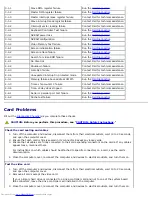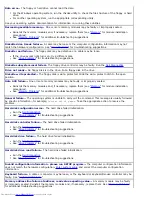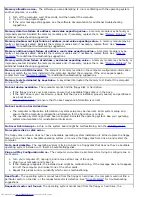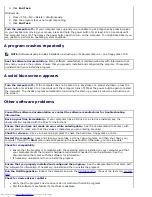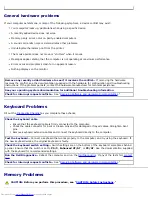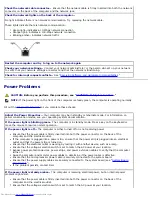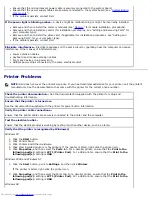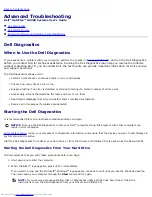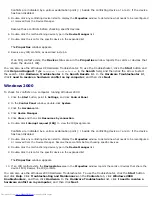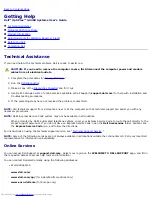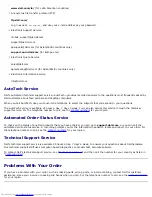
Ensure that the microprocessor power cable is securely connected to the system board.
Ensure that the power supply cables are securely connected to the system board (see "
System Board
Components
").
If the problem persists, contact Dell.
If the power light is blinking amber—
A device might be malfunctioning or might be incorrectly installed.
Remove and then reinstall the memory modules (see "
Memory
" for module installation procedures).
Remove and then reinstall any cards (for installation procedures, see "Adding and Removing Parts" for
your computer type).
Remove and then reinstall the video card, if applicable (for installation procedures, see "Adding and
Removing Parts" for your computer type).
If the problem persists, contact Dell.
Eliminate interference—
Electrical appliances on the same circuit or operating near the computer can cause
interference. Other causes of interference are:
Power extension cables
Keyboard and mouse extension cables
Too many devices on a power strip
Multiple power strips connected to the same electrical outlet
Printer Problems
NOTE:
Dell does not cover the printer's warranty. If you need technical assistance for your printer, call the printer's
manufacturer. See the documentation that came with the printer for the correct phone number.
Check the printer documentation—
See the documentation supplied with the printer for setup and
troubleshooting information.
Ensure that the printer is turned on—
See the documentation supplied with the printer for power button information.
Verify the printer cable connections—
Ensure that the printer cables are securely connected to the printer and the computer.
Test the electrical outlet—
Ensure that the electrical outlet is working by testing it with another device, such as a lamp.
Verify that the printer is recognized by Windows®
Windows XP
1. Click the
Start
button.
2. Click Control Panel.
3. Click Printers and Other Hardware.
4. Click View installed printers or fax printers. If the printer is listed, right-click the printer icon.
5. Click
Properties,
and then select the
Ports
tab. For a parallel printer, ensure that the
Print to the
following port(s):
setting is
LPT1 (Printer Port)
. For a USB printer, ensure that the
Print to the
following port(s):
setting is
USB
.
Windows 2000 and Windows NT
1. Click the
Start
button, point to
Settings
, and then click
Printers
.
If the printer is listed, right-click the printer icon.
2. Click
Properties,
and then select the Ports tab. For a parallel printer, ensure that the
Print to the
following port(s):
setting is
LPT1 (Printer Port)
. For a USB printer, ensure that the
Print to the
following port(s):
setting is
USB
.
Windows 98
Summary of Contents for GX260 - Optiplex Pentium 4 2.0GHz 512MB 40GB CD
Page 6: ......
Page 29: ......
Page 37: ...Back to Contents Page ...
Page 40: ...information on resetting the chassis intrusion detector Back to Contents Page ...
Page 73: ......
Page 76: ......
Page 86: ...2 padlock ring 3 two release buttons one on each side Back to Contents Page ...
Page 111: ......
Page 128: ...1 release buttons 2 security cable slot 3 padlock ring Back to Contents Page ...
Page 155: ...Back to Contents Page ...
Page 186: ...Back to Contents Page ...
Page 210: ...Back to Contents Page ...
Page 232: ...BSMI Notice Taiwan Only ...


